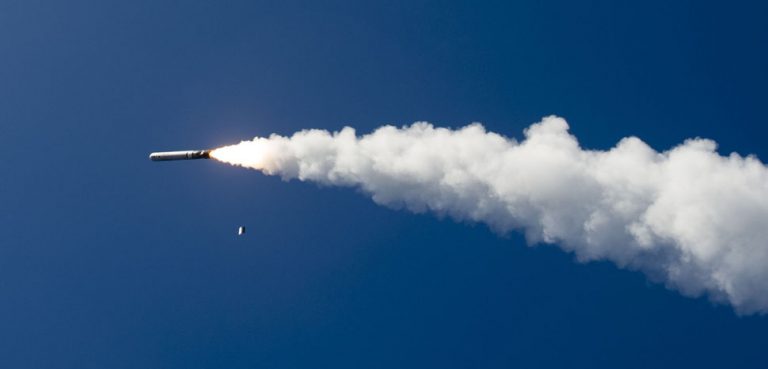Key Takeaways
- Hypersonic weapons are presented as a military game-changer, with programs appearing in defense budgets around the world.
- The first battlefield deployments of hypersonic weapons have failed to live up to the hype in the Ukraine war.
- Skeptics question what the platform brings to the table in terms of new operational capacities.
Hypersonic weapons have long been regarded as a game changer in global military affairs, a platform that could render missile countermeasures ineffective and tilt the tactical balance in favor of offense.
The ‘hypersonic’ label refers to a missile’s ability to reach speeds greater than Mach 5 (five times the speed of sound). However, given that there are non-hypersonic ballistic missiles that can also exceed these speeds, some have cited in-flight maneuverability as another determining feature.
Boasting high speeds, maneuverability, and most importantly, a hypothetical ability to evade legacy missile defense systems, hypersonic weapons represent a significant advance in military technology: they can strike quickly and accurately from great distances and are nearly impossible to intercept. And critically, since they can be equipped with nuclear payloads, hypersonic weapons have the potential to destabilize nuclear deterrence equilibriums by neutralizing existing countermeasures and reducing response times.
Initially, the United States, Russia, and the People’s Republic of China (PRC) were the only states to develop hypersonic programs. However, hypersonic weapons are now proliferating around the globe: Iran and even the Houthis in Yemen claim to possess them; Turkey is testing a Bayraktar-developed model and Japan is developing two platforms; Australia has begun joint production of hypersonic missiles with the United States; and Japan and the United States have come together to co-develop a new generation of defensive countermeasures.
There are several types of hypersonic weapons, including hypersonic glide vehicles (HGVs), hypersonic cruise missiles (HCMs), and aero-ballistic missiles, all of which can be launched from air, ground, or naval platforms.
HGVs are launched atop conventional ballistic missiles and released at high altitudes. They re-enter the atmosphere and glide toward their target at hypersonic speeds (over Mach 5), performing evasive maneuvers during flight designed to thwart missile defense systems. It is this maneuverability during re-entry that sets HGVs apart from conventional ballistic reentry vehicles; moreover, their lower flight path vis-à-vis conventional missiles pushes back radar detection and shrinks the window of opportunity for interdiction.
Hypersonic cruise missiles (HCMs) are powered by advanced propulsion systems, such as scramjets, which enable them to maintain hypersonic speeds throughout their flight. They typically fly at higher altitudes compared to hypersonic glide vehicles and follow more traditional missile flight paths, allowing for easier detection by radar systems. However, HCMs are able to reach extremely high speeds; this combined with their ability to vary altitude and trajectory during flight make them extremely difficult to intercept.
Russia’s Hypersonic Weapons Program
Russia originally accelerated its hypersonic weapons development in response to US missile defense advancements and the US withdrawal from the Anti-Ballistic Missile Treaty in 2001. President Putin has emphasized the need for these weapons to maintain Russia’s nuclear deterrent capabilities against growing US defense capabilities. Russia conducts tests at the Central Aero-Hydrodynamic Institute in Zhukovsky and the Khristianovich Institute of Theoretical and Applied Mechanics in Novosibirsk, among others, with testing sites at Dombarovskiy Air Base, Baykonur Cosmodrome, and the Kura Range.
Russia is currently developing at least three new hypersonic weapons: the Avangard, Tsirkon (or Zircon), and Kinzhal.
The Avangard is a hypersonic glide vehicle capable of speeds in excess of Mach 20, with a range of 6,500 miles. It was put into operation as early as 2019 on the SS-19 Mod 4 and is the only strategic-range hypersonic glide vehicle currently in deployment. It will transition to the SS-X-30 (RS-28 Sarmat), which can carry up to three Avangard HGVs, each with a yield of up to two megatons.




